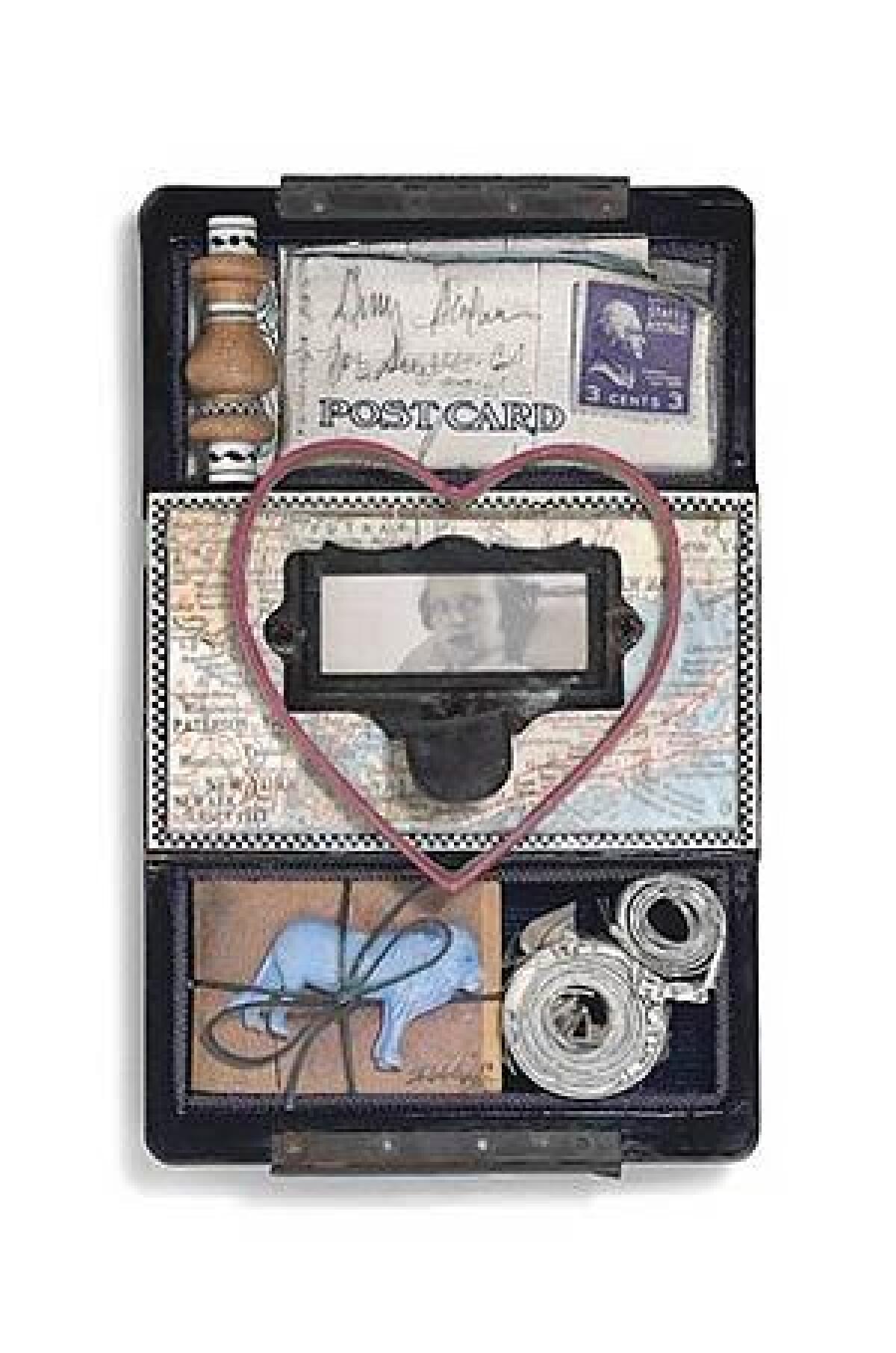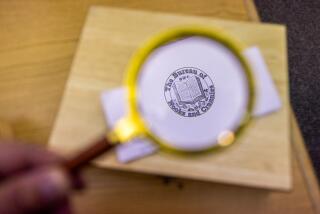Book review: ‘This Must Be the Place’ by Kate Racculia

This Must Be the Place
A Novel
Kate Racculia
Henry Holt: 354 pp., $25
During his lifetime, the artist and sculptor Joseph Cornell established a celebrated career by creating shadow boxes filled with eclectic assemblages of random objects that transformed these commonplace items into miniature landscapes of poetry. In her entertaining debut novel, “This Must Be the Place,” Kate Racculia taps into the art and ideas of Cornell for inspiration and populates her charming, imaginative novel with found objects that speak to her characters’ past lives and ultimately their long-held secrets.
The novel opens with Amy Henderson, an eccentric teenager obsessed with the creations of special effects master Ray Harryhausen, on a Greyhound bus bound for Los Angeles from Ocean City, N.J. After working there with her best friend, Mona Jones, Amy has left abruptly after an unspoken incident. On the bus, she pens a postcard that she intends to send Mona to explain her actions. At the note’s end, Racculia writes: “Anyway, I left you the best parts of myself, she wrote. You know, where to look.” As it turns out, the card goes unsent — and Amy begins her new life in Hollywood, and Mona returns to their small hometown of Ruby Falls in upstate New York.
The story then jumps forward 16 years to follow Arthur Rook, a photographer married to Amy who’s suddenly a widower at 32, when Amy dies of heart failure during a freak electrical accident on a movie set. It’s a bold move to allow a primary character to perish during the novel’s opening pages, but the ghost of Amy never strays far from the narrative: What she leaves behind provides the hinges that connect many of the characters. Arthur discovers in their cluttered closet a pink shoebox crammed with memorabilia, including the Ocean City postcard. Mona’s address inspires Arthur to take a trip to Ruby Falls — and to Amy’s earlier life.
There, in Ruby Falls, Arthur finds Mona living with her daughter, Oneida, in the Darby-Jones boardinghouse, where a cast of idiosyncratic individuals resides. Told in alternating sections by Arthur, Oneida, Mona and Eugene Wendell (a classmate of Oneida’s), the story moves along at a steady clip with unexpected turns and revealed secrets. The reader learns that Mona has been raising Oneida on her own and a mystery surrounds the identity of her father. Arthur disappears into his new living quarters, making one of his rooms a life-size Cornell box of sorts with magazine scraps, Crackerjack prizes and other objects decorating its walls. After he accidentally falls down the boardinghouse’s stairs, Mona nurses Arthur back to life and learns about his past. Oneida makes discoveries of her own when she hangs out with Eugene, who’s a misanthrope at school. Later, the characters end up constructing their own version of a Cornell box, and the creative burst of activity offers an unexpected moment of healing.
Racculia’s vivid, small-town life of Ruby Falls is evocative of similar terrains found in the memorable, coming-of-age novels by Lorrie Moore (“Who Will Run the Frog Hospital?”) and Elizabeth Strout (“Amy and Isabelle”), in which teenagers are forever seeking a way out of their unremarkable lives through reckless acts. Although Racculia’s prose doesn’t share the extraordinary command of Strout and Moore’s novels, her writing does elevate to impressive heights during quieter moments. When, for example, Mona and Amy ride the Ferris wheel at the amusement park in Ocean City, the author writes: “They were friends at the top of the dark world, held aloft in an electric basket, and though they must have known the wheel would turn and bring them back to the ground, for that month the ocean wind ruffled their hair and they swung, weightless.”
In the end, it’s challenging to categorize Racculia’s debut: coming-of-age story, women’s fiction, quasi-mystery? Despite not landing squarely into any of these genres, “This Must Be the Place” makes for a lively read as it explores the themes of friendship, love, loss and forgiveness. Like Cornell, the author creates subtle moments of poetry by way of everyday objects and lives.
Walsh is a writer whose reviews have appeared in publications including the New York Times and the Times Literary Supplement.
More to Read
The biggest entertainment stories
Get our big stories about Hollywood, film, television, music, arts, culture and more right in your inbox as soon as they publish.
You may occasionally receive promotional content from the Los Angeles Times.










